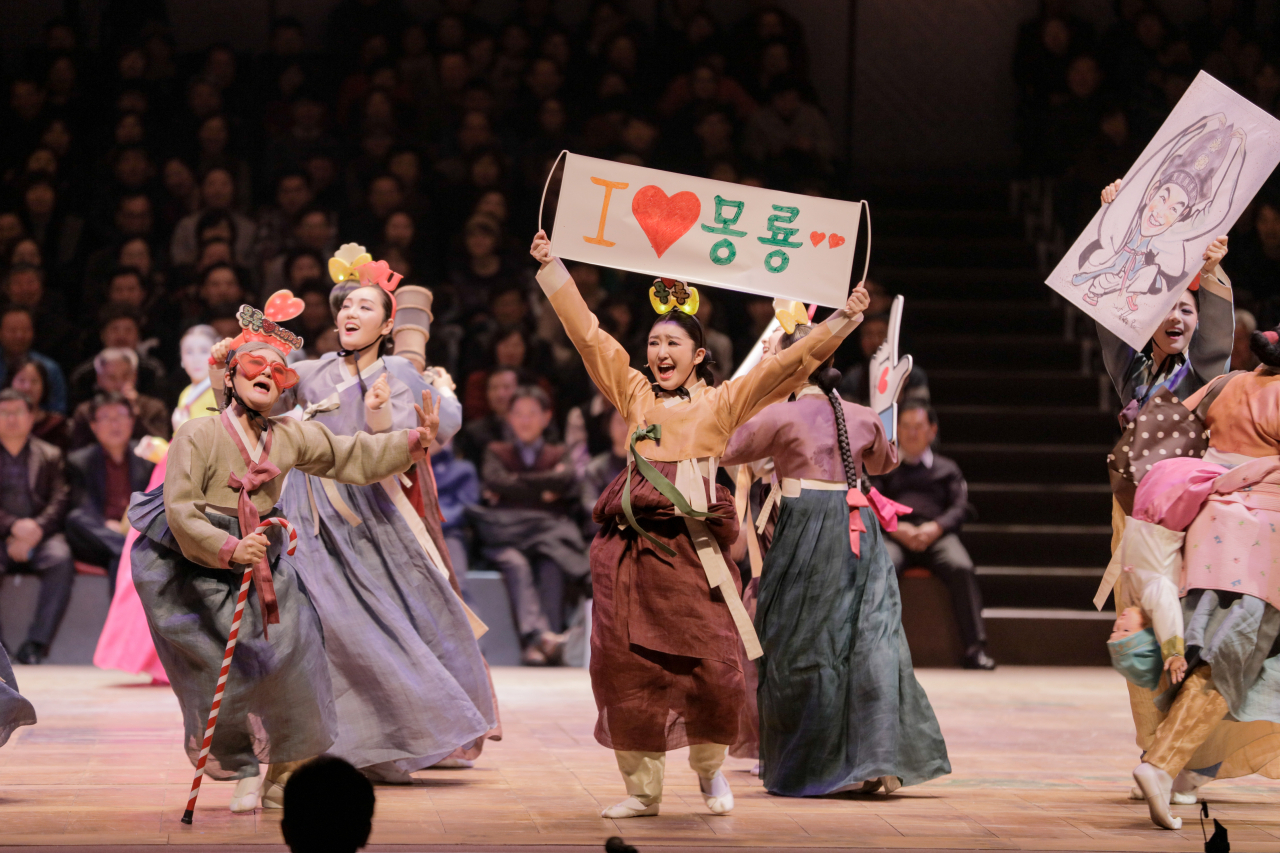 |
"Chunhyang is Coming" (National Theater of Korea) |
The National Theater of Korea is set to present two new productions that celebrate the rich heritage of Korean performing arts.
Featuring iconic pansori, or Korean traditional narrative singing, and an unexpected convergence of characters from classic folktales, these works promise to be a showcase of dynamic storytelling, captivating performances and a fresh take on timeless traditions.
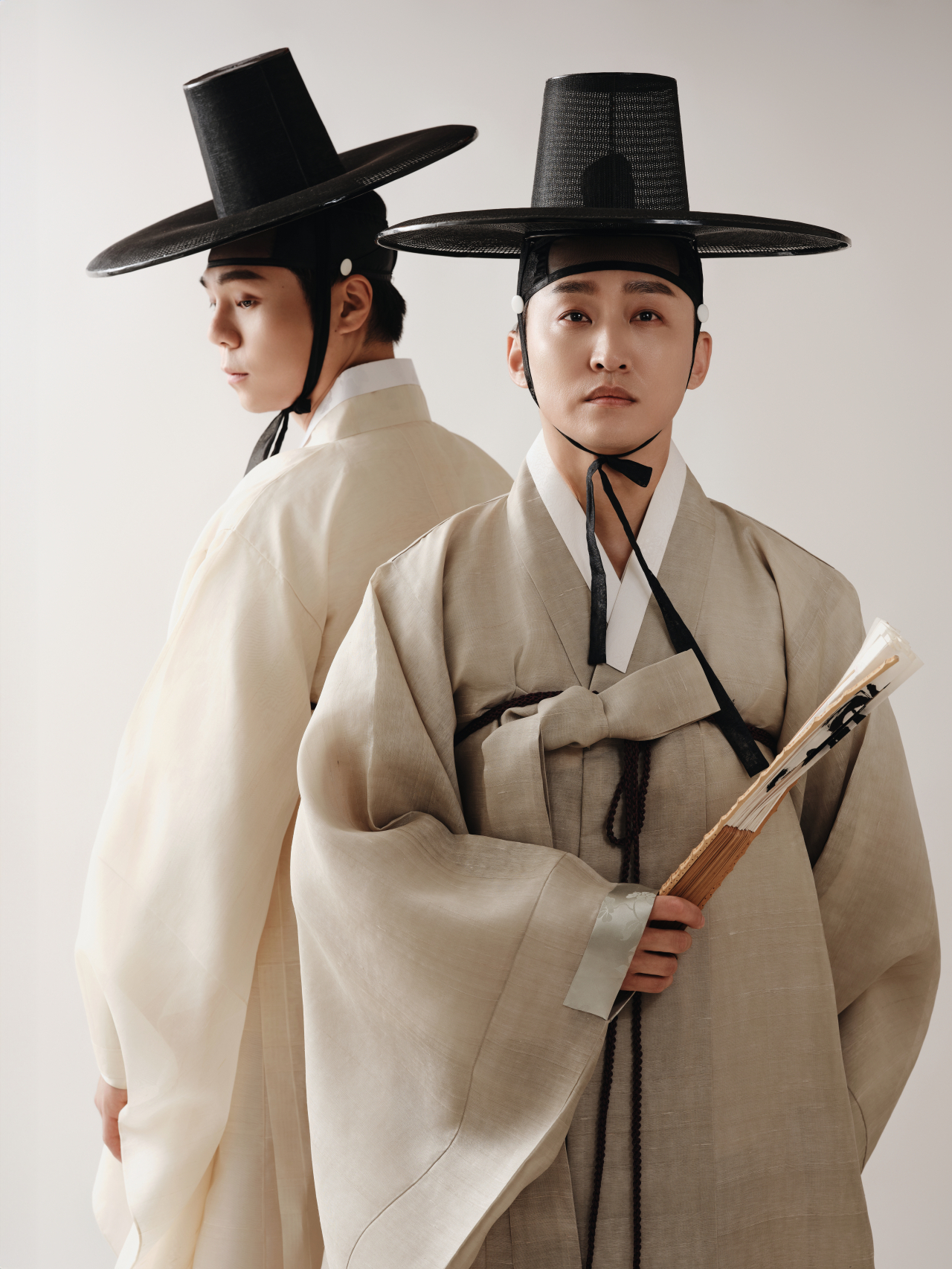 |
Lee Kwang-bok (right) and Kim Su-in play Lee Nal-chi in the "changgeuk," or Korean opera, production "The Story of Lee Nal-chi." (National Theater of Korea) |
Tale of legendary pansori singer featuring greatest hits, tightrope acts
Like a flying fish gliding swiftly over water, Lee Gyeong-sook (1820–1892) was said to be agile and skilled in tightrope walking, earning him the nickname Lee Nal-chi, meaning flying fish.
Lee is one of the eight great pansori singers of the late Joseon era. He is the namesake of the alternative pop band Leenalchi, famed for its hit 2020 song "Tiger is Coming."
Now, the life of this legendary figure is dramatized in the National Changgeuk Company’s new production "The Story of Lee Nal-chi," which opens Thursday at the Daloreum Theater for a week-long run.
The production is a work of "faction," a blend of fact and fiction, that weaves imaginative storytelling in presenting Lee's tumultuous life.
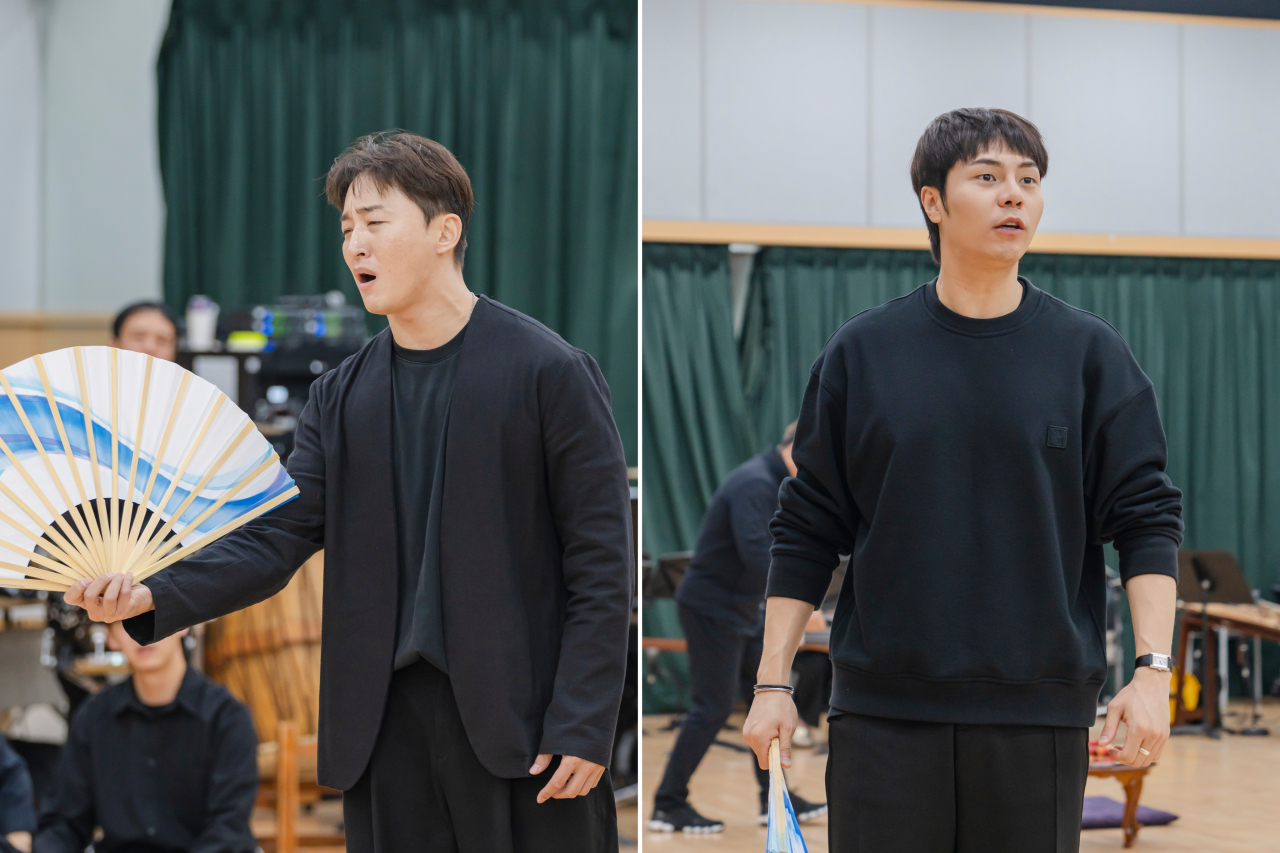 |
Lee Kwang-bok (left) and Kim Su-in rehearse a scene from the "changgeuk" production "The Story of Lee Nal-chi." (National Theater of Korea) |
Few records remain of Lee's life, as he was born a servant to a "yangban" (aristocratic) family during the Joseon era, in which society was strictly divided into four social classes. He rose from this humble position to become a masterful tightrope walker, then a "gosu" (drummer in pansori performances) for a renowned pansori master. Ultimately, he ascended to become the greatest singer of the era.
Playwright Yoon Suk-mi said she focused on criticism of elites during similar periods in which the aristocracy was collapsing in Joseon and Europe, for example France. The play highlights Lee’s determination to break free from societal constraints.
“Around the same time that the aristocracy was collapsing in both regions, pansori emerged in Korea and opera in Western Europe,” Yoon said.
The show will feature highlights from the five surviving pansori tales, including "Simcheongga," "Chunhyangga" and "Sugungga."
The creative team also promised the production would be a comprehensive display of traditional Korean performing arts, including pansori, "pungmul" (a traditional Korean rural drumming and performance troupe), "namsadang" (traveling performers' acrobatics and circus) and tightrope walking. Lee’s life -- spanning the roles of tightrope artist, drummer and singer -- is inseparable from these forms of performance, said director Jung Jong-im. The tightrope acts will be performed by master artist Nam Chang-dong.
Lee is played in a double cast by the company's performers, Lee Kwang-bok and Kim Su-in.
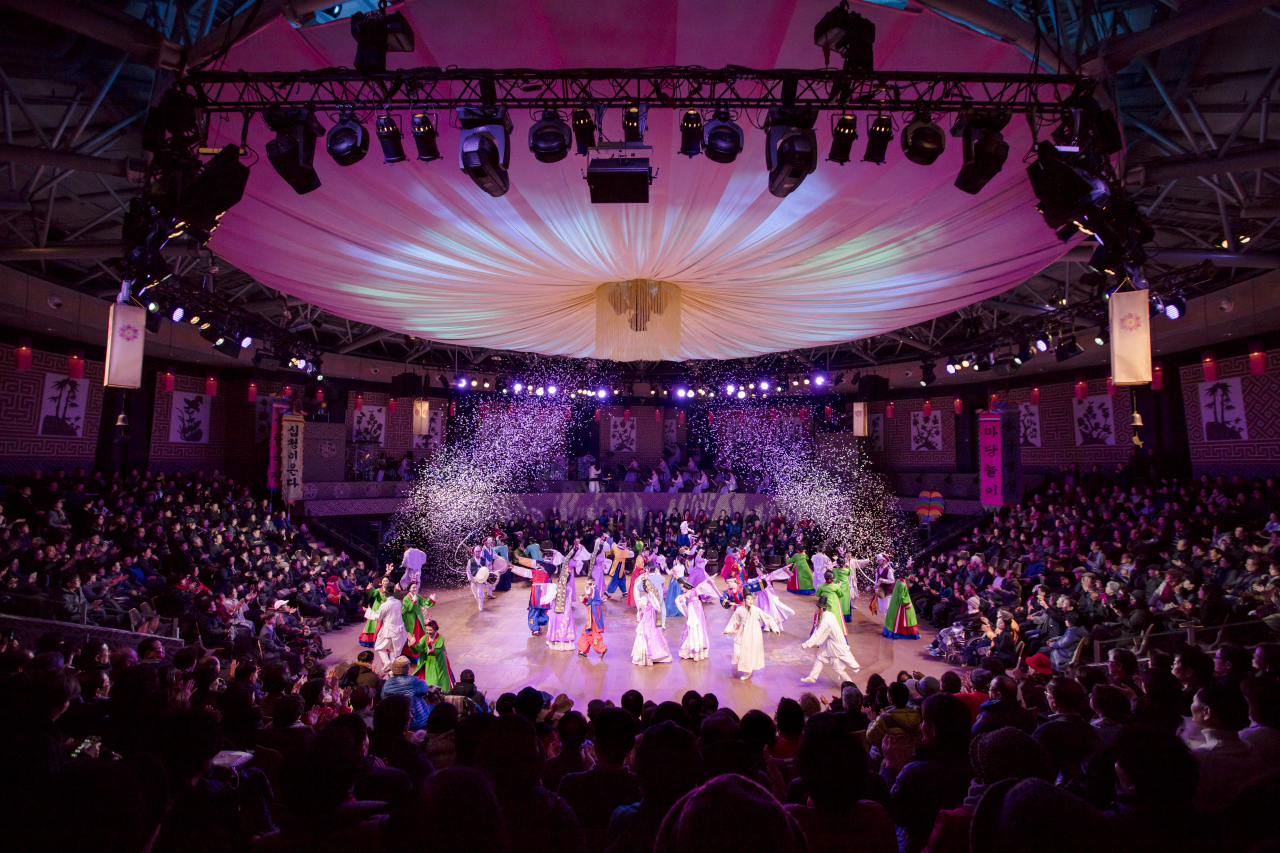 |
A "madangnori" performance in 2017 (National Theater of Korea) |
Characters from iconic folktales unite in 'Assorted Madangnori'
The National Theater will also bring "Assorted Madangnori," a monthlong performance from Nov. 29 to Jan. 30 at the Haneul Theater to celebrate the end of the year and welcome the new year.
"Madangnori," a fusion of the words "madang" (yard) and "nori" (play), is a vibrant form of Korean outdoor theater that incorporates active audience participation, bringing traditional Korean classics to life through satire and humor.
The term was first coined by acclaimed director Sohn Jin-chaek in 1981. His theater company, Michoo, has staged the performance more than 3,000 times over three decades, touring across the country.
The National Theater has continued this legacy, premiering its own madangnori series with Sohn, starting with "Simcheong is Coming" in 2014.
For the 10th anniversary, a collection of popular madangnori works will be performed -- "Simcheong is Coming," "Chunhyang is Coming" and "Nolbo is Coming." These works bring to life the main characters from three of the five surviving pansori tales -- "Simcheong-ga," "Chunhyang-ga" and "Heungbo-ga" -- with Nolbo, the antagonist, appearing as the brother of Heungbo.
The highlight is the unexpected pairing of protagonists from well-known Korean folktales, brought together on the same stage. For example, Simcheong's blind father, Sim the Blind, interrupts an amorous dialogue between Chunhyang and Mongryong, while Nolbo unexpectedly appears before Sim, who has lost his daughter, Cheong, for 300 sacks of rice. The production’s dynamic storytelling, which modernizes and reinterprets these classic tales, is one of its major draws, according to the creative team.
Legendary madangnori performers Yoon Mun-sik, Kim Seong-nyeo and Kim Jong-yeop will make their highly anticipated return to the stage after 13 years, having last performed together in 2011. Joining them are star performers from the National Changgeuk Company, including Kim Jun-soo and Yu Tae-pyung-yang.
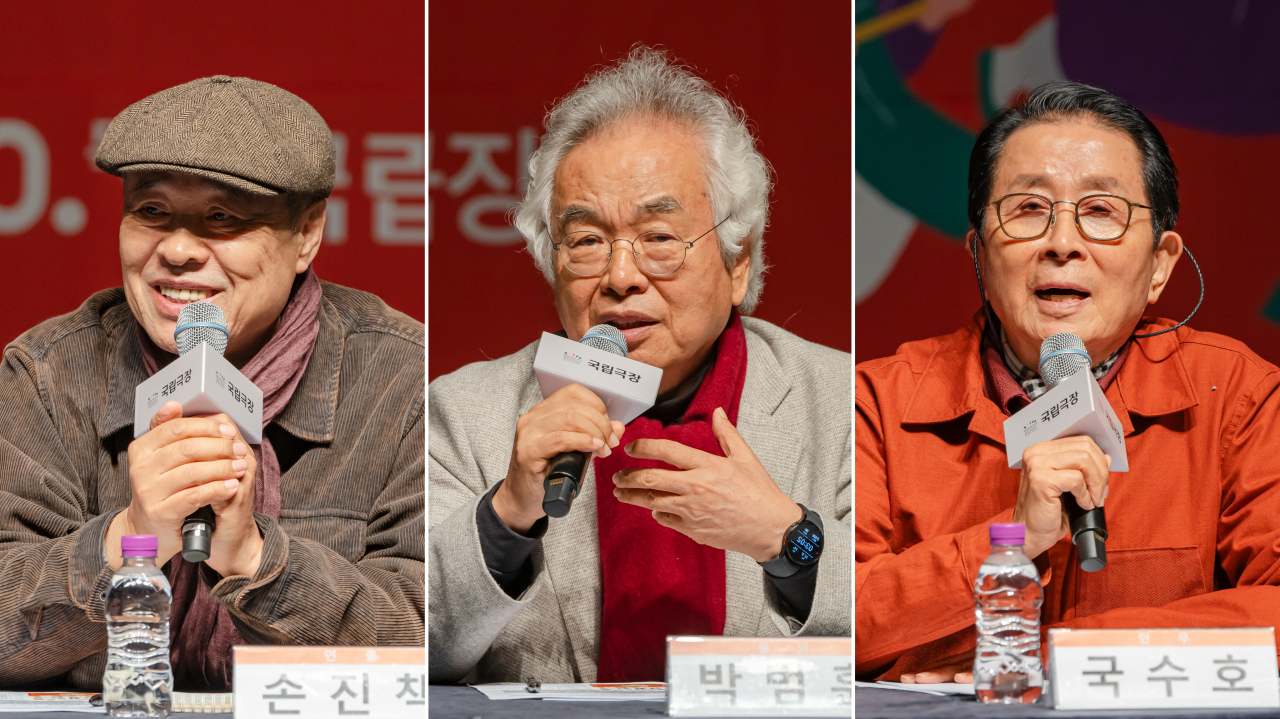 |
From left, director Sohn Jin-chaek, composer-conductor Park Bum-hoon and choreographer Guk Su-ho speak in a press conference in Seoul on Nov. 5. (National Theater of Korea) |
“I think madangnori is the most quintessentially Korean form of play,” said director Sohn at a press conference held last week. Two masters of Korean music and dance, composer-conductor Park Bum-hoon and choreographer Guk Su-ho teamed up again for the anniversary.
“The work brings together the highlights of three popular stories and marks the meeting of the old and new generations of staff and actors. It’s my wish to truly pass madangnori on to the younger generation.”
Madangnori is typically performed outdoors in a yard open on all sides, but this production brings the tradition indoors. The Haneul Theater will transform its rear area into a seating area, creating a circular stage that evokes the feeling of an outdoor performance.
“In fact, the audience comes ready to open their hearts, applaud, laugh and participate. No special prior knowledge is required," said Sohn.
Based on his experience performing madangnori overseas, he explained that international audiences have appreciated the live, dynamic interaction that defines madangnori.
"Even if they don't understand the dialogue, the connection with the live audience itself makes it easy to grasp the performance."







